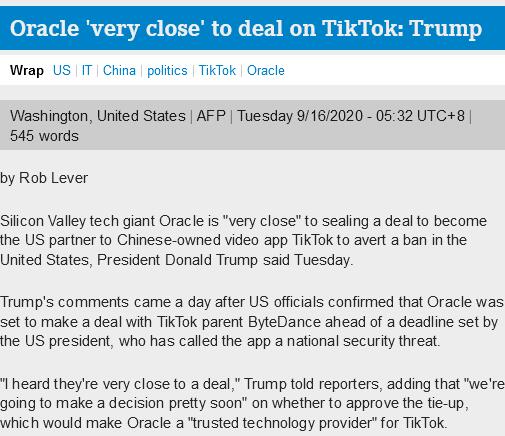秦兵马俑(导游词)_秦兵马俑导游词
秦兵马俑(导游词)
大家好!我是你们这次游览的导游。大家可以叫我小陈。

hello everyone! i'm your tour guide. you can call me xiao chen.
秦兵马俑在西安的临潼出土,它举世无双,都是精美的艺术珍品。谁知道它的占地面积有多大呢?对,就是20000平方米,大概有50个篮球场那么大,坑内有兵马俑近八千个。大家想不想知道他的来历呢?让我来告诉你们吧:以前有几个农民相约一起打水井,发现了有一些陶片,他们继续打井,发现那是一条通道。他们陆陆续续下去察看,就发现了‘秦兵马俑’。好!大家一起参观一下吧!
unearthed in lintong, xi'an, the qin terracotta warriors are unique in the world and are all exquisite art treasures. who knows how large it covers? yes, 20000 square meters. it's about 50 basketball courts. there are nearly 8000 terra cotta warriors in the pit. do you want to know his origin? let me tell you something: several farmers used to make an appointment to dig wells together and found some pottery chips. they continued to dig wells and found that it was a channel. they went on and on and found the terra cotta warriors. good! let's have a look!
兵马俑不仅规模宏大,而且类型众多,个性鲜明。你们看,那些身材魁梧,头带鹤冠,身披铠甲,手握宝剑是什么俑?他就是将军俑。那神态自若的样子,一看就知道他们是久经沙场,重任在身的领军人物了!
terracotta warriors are not only large-scale, but also of many types and distinct personalities. you see, what are those terra cotta figures with big body, crane crown, armor and sword in hand? he is the general figurine. that look of self-respect, at a glance, we know that they are the leaders who have been through the battlefield for a long time!
大家跟我来。那些身高1。8米什么俑,体格健壮,体形匀称,身穿战袍,披挂铠甲,手持兵器的是什么俑?对,就是武士俑。
come with me, everyone. those are 1. what 8-meter-long terra cotta figures are strong and well-balanced. what are the terra cotta figures wearing war robes, armor and weapons? yes, the warriors.
谁知道身着短甲,下穿紧口裤,左手握弓箭,右手执缰绳的又是什么俑?错了,是骑兵俑。你们看,每一个兵马俑都是极为精美的术珍品。仔细端详,他们神态各异,惟妙惟肖,走近他们身边,似乎还能感受到他们轻微的呼吸呢!哈哈!!!!
who knows what kind of figurines are wearing short armor, tight pants, bow and arrow in left hand and reins in right hand? wrong. it's the cavalry figurine. you see, every terra cotta warriors is an extremely exquisite art treasure. look carefully, they look different, lifelike, close to them, it seems that they can feel their slight breath! ha-ha!!!!
好了,还有很多精彩的东西,大家自由参观,自己欣赏吧。活动时间,请大家注意安全!
well, there are many wonderful things. let's visit them freely and enjoy them by ourselves. activity time, please pay attention to safety!
秦兵马俑导游词
大家好!我是梦幻旅行社的一名优秀
导游
。很荣幸,今天能带领大家一起去已被列入《世界遗产名录》的秦始皇陵及兵马俑坑游玩。那么现在我们就出发吧!秦兵马俑坑是秦始皇的陪葬坑,由一号、二号、三号坑组成。今已建成博物馆。兵马俑排列成阵,气势壮观。兵马俑分将军俑骑兵俑武士俑陶马等。馆内还展出了大型彩绘铜车马。被称为世界第八大奇迹的秦兵马俑展示了古长安往日的辉煌。
现在我们已经到了目的地--一号坑。一号坑在三个俑坑中面积最大,东西有230米长,南北有62米宽,总面积有14260平方米呢!坑里的兵马俑也最多,有6000多个呢!
那么现在我就带领大家一起去看看类型众多的兵马俑吧!请大家在游览过程中不要乱丢垃圾,随地吐痰,破坏公共文物等
看!这就是将军俑。它身材魁梧,头戴鹤冠,身上披着铠甲,手里还握着宝剑,看它那若有所思样子,好像在考虑如何打退匈奴大军呢!
那个兵马俑名叫武士俑。它身穿战袍,披挂铠甲,脚上还穿着前端向上翘的战靴,手里还拿着兵器,瞧他那神气的样子,准能把敌人吓的屁滚尿流!
看这个身披铠甲骑在马上的青年,就是骑兵俑,他手持弓箭好像在等将军一声令下,就去与匈奴大军作殊死拼博!
这个兵马俑是陶马,它的大小跟真马差不多,个个形体健壮,肌肉丰满。看它那跃跃欲试的样子,好像一声令下,就会撒开四蹄,腾空而起,踏上征程哩!
今天,我的讲解就到这,谢谢大家对我的支持与信任。拜拜!
东城第一小学四年级:丁妍
兵马俑移步换景导游词作文200字 兵马俑导游稿
秦兵马俑的导游词200字—350字急!!
尊敬的女士们、先生们:
兵马俑移步换景导游词作文200字 兵马俑导游稿
今天,我们将参观秦兵马俑博物馆。秦兵马俑博物馆位于酉安市东35公里处,从喜来登酒店坐车到那里大约需要50分钟时间。自秦兵马俑博物馆于1979年10月1日开馆至今,已有为效众多国家的党政首脑都参观过这个博物馆,更有数以百万计的中外游客不远干里来参观这个人类奇迹。法国总统希拉克曾留言说过:“世界上原有七大奇迹,秦兵马俑的发现,可以说是第八大奇迹了。不看金字塔.不算真正到过埃及‘不看秦俑,不算真正到过中国。”美国前副总统蒙代尔也说;“这是真正的奇迹。全世界人民都应该到这里看一看。”从这些高度凝练的话语中,我们不难看出秦俑的历史价值及艺术价值。下面,我想把秦始皇这位成就一代伟业的历史巨人介绍给诸位,以便使大家能对秦始皇兵马俑和与之相关的历史有一个较详尽的了解。 Ha!大家好,我是“快乐旅游团”的曾导游。今天,我带大家到西安城东30公里处。1974年2月,当地农民在秦始皇陵东侧1.5地带(骊山脚下)的秦兵马俑。
兵马俑移步换景导游词作文200字 兵马俑导游稿
在当年,秦始皇登基后,就开始营建陵园,由丞相李斯主持规划设计,大将章邯监工,修筑时间长达38年,工程之浩大、气魄之宏伟,创历代封建统治者奢侈厚葬之先例。当时,秦朝总人口约2000万,而筑陵劳役达72万之多。修陵家用土,取自今陵园以南2000米的三刘村到县采石场部之间,有高5~25米的多级黄土崖。修陵园所用大量石料取自渭河北的仲山、峻峨山,全靠人力运至临潼,工程十分艰难。工程量之大可想而知,仲山,峻峨山下死尸成片,侧面显示了整个工程的残酷。它还被称为“世界八大奇迹”之一呢!
秦兵马俑分为3个坑,总面积2 000平方米。兵马俑个个健壮,形态各异,多若有所思的样子!俑分为:将军俑、鞍马俑、跪姿射俑、骑兵俑、武士俑……其中,1号坑最大,东西长230米,南北宽62米,深约5米。武士俑大约有500件,战车6乘,驾车马24匹,还有青铜剑、吴钩、矛、箭、弩机、铜戟等实战用的青铜兵器和铁器。佣兵们个个面部神态、服式和动作各不相同:有的若有所思,好像考虑着怎样配合,战胜敌人;有的深深的吸了口气,好像在想,作为秦国的人,一定要帮皇上打败天下所有的地方;有的往远处望,好像在思念远方的亲人……说了那么多兵俑,该说马俑了:陶马双耳竖立,有的张嘴嘶鸣,有的闭嘴静立。所有这些秦始皇兵马俑都富有感人的艺术魅力。如果你屏息凝视的看着它,你就会发觉它肌肉丰满,比真马还要逼真!
哦,现在我们的旅行到此为止。这次旅游,你们痛快吗?希望大家多参加“快乐旅游团”的活动,谢谢!
兵马俑移步换景导游词作文200字 兵马俑导游稿
陕西西安秦始皇兵马俑英文导游词
emperor qin shihuang’s mausoleum and the terra-cotta warriors and horses museum
emperor qin shihuang (259-210b.c.) had ying as his surname and zheng as his given name. he name to the throne of the qin at age 13, and took the helm of the state at age of 22. by 221 b.c., he had annexed the six rival principalities of qi, chu, yan, han, zhao and wei, and established the first feudal empire in china’s history.
in the year 221 b.c., when he unified the whole country, ying zheng styled himself emperor. he named himself shihuang di, the first emperor in the hope that his later generations be the second, the third even the one hundredth and thousandth emperors in proper order to carry on the hereditary system. since then, the supreme feudal rulers of china’s dynasties had continued to call themselves huang di, the emperor.
after he had annexed the other six states, emperor qin shihuang abolished the enfeoffment system and adopted the prefecture and county system. he standardized legal codes, written language, track, currencies, weights and measures. to protect against harassment by the hun aristocrats. emperor qin shihuang ordered the great wall be built. all these measures played an active role in eliminating the cause of the state of separation and spanision and strengthening the unification of the whole country as well as promotion the development of economy and culture. they had a great and deep influence upon china’s 2,000 year old feudal society.
emperor qin shihuang ordered the books of various schools burned except those of the qin dynasty’s history and culture, spanination and medicines in an attempt to push his feudal autocracy in the ideological field. as a result, china’s ancient classics had been devastated and destroy. moreover, he once ordered 460 scholars be buried alive. those events were later called in history“the burning of books and the burying of confucian scholars.”
emperor qin shihuang,for his own pleasure, conscribed several hundred thousand convicts and went in for large-scale construction and had over seven hundred palaces built in the guanzhong plain. these palaces stretched several hundred li and he sought pleasure from one palace to the other. often nobody knew where he ranging treasures inside the tomb, were enclosed alive.
emperor qin shihuang’s mausoleum has not yet been excavated. what looks like inside could noly be known when it is opened. however, the three pits of the terra-cotta warriot excavated outside the east gate of the outer enclosure of the necropolis can make one imagine how magnificent and luxurious the structure of emperor qin shihuang’s mausoleum was.共4页,当前第1页1
北京长城英文
导游
词 ·岳阳楼英文导游
辞 ·重庆英文导游
词 ·西藏英文导游
词no.1 pit was stumbled upon in march 1974 when villagers of xiyang village of yanzhai township, lintong county, sank a well 1.5km east of the mausoleum. in 1976, no.2 and 3 pits were found 20m north of no.1 pit respectively after the drilling survey. the terra-cotta warriors and horses are arrayed according to the qin dynasty battle formation, symbolizing the troops keeping vigil beside the mausoleum. this discovery aroused much interest both at home and abroad. in 1975, a museum, housing the site of no.1 and covering an area of 16,300 square meters was built with the permission of the state council. the museum was formally opened to public on oct.1, the national day, 1979.
no.1 pit is 230 meters long from east to west, 62m wide from north to south and 5m deep , covering a total area of 14,260 square meters. it is an earth-and-wood structure in the shape of a tunnel. there are five sloping entrances on the eastern and western sides of the pit respectively. the pit is spanided into eleven corridors by ten earthen partition walls, and the floors are paved with bricks. thick rafters were placed onto the walls (but now one can only see their remains), which were covered with mats and then fine soil and earth. the battle formation of the qin dynasty, facing east. in the east end are arrayed three lines of terra-cotta warriors, 70 pieces in each, totaling 210 pieces. they are supposed to be the van of the formation. immediately behind them are 38 columns of infantrymen alternating with war chariots in the corridors, each being 180m long. they are probably the main body of the formation. there is one line of warriors in the left, right and west ends respectively, facing outwards. they are probably the flanks and the rear. there are altogether 27 trial trench, it is assumed that more than 6,000 clay warriors and horses could be unearthed from no.1 pit.
no.2 pit sis about half the size of no.1 pit, covering about 6,000 square meters trail diggings show this is a composite formation of infantry, cavalry and chariot soldiers, from which roughly over 1,000 clay warriors, and 500 chariots and saddled horses could be unearthed. the 2,000-year-old wooden chariots are already rotten. but their shafts, cross yokes, and wheels, etc. left clear impressions on the earth bed. the copper parts of the chariots still remain. each chariot is pulled by four horses which are one and half meters high and two metres long. according to textual research, these clay horses were sculptures after the breed in the area of hexi corridor. the horses for the cavalrymen were already saddled, but with no stirups.共4页,当前第2页2
no.3 pit covers an area of 520m2 with only four horses, one chariot and 68 warriors, supposed to be the command post of the battle formation. now, no.2 and 3 pits have been refilled, but visitors can see some clay figures and weapons displayed in the exhibition halls in the museum that had been unearthed from these two pits. the floors of both no.1 and 2 pits were covered with a layer of silt of 15 to 20cm thick. in these pits, one can see traces of burnt beams everywhere, some relics which were mostly broken. analysis shows that the pits were burned down by xiang yu, leader of a peasant army. all of the clay warriors in the three pits held real weapons in their hands and face east, showing emperor qin shihuang’s strong determination of wiping out the six states and unifying the whole country.
the height of the terra-cotta warriors varies from 1.78m, the shortest, to 1.97m, the tallest. they look healthy and strong and have different facial expressions. probably they were sculpted by craftsmen according to real soldiers of the qin dynasy. they organically combined the skills of round engraving, bas-relief and linear engraving, and utilized the six traditional folk crafts of sculpturing, such as hand-moulding, sticking, cutting, painting and so on. the clay models were then put in kilns, baked and colour-painted. as the terra-cotta figures have beeb burnt and have gone through the natural process of decay, we can’t see their original gorgeous colours. however, most of the terra-cotta figures bear the trace of the original colours, and few of them are still as bright as new. they are found to be painted by mineral dyestuffs of vermilion, bright red, pink dark green, powder green, purple, blue, orange, black and white colours.
thousands of real weapons were unearthed from these terra-cotta army pits, including broad knives, swords, spears, dagger-axes, halberds, bows, crossbows and arrowheads. these weapons were exquisitely made. some of theme are still very sharp, analyses show that they are made of alloys of copper and tin, containing more than ten kinds of other metals. since their surfaces were treated with chromium, they are as bright as new, though buried underground for more than 2,000 years. this indicates that qin dynasty’s metallurgical technology and weapon-manufacturing technique already reached quite a high level.共4页,当前第3页3
in december 1980, two teams of large painted bronze chariots and horses were unearthed 20 metres west of the mound of emperor qin shihuang’s mausoleum. these single shaft four-horse chariots each comprises 3,462 spare parts, and has a body with two compartments, one behind the other, and an elliptical umbrella like canopy. the four horses harnessed to the chariot are 65-67 centimeters tall. the restored bronze chariots and horses are exact imitations of true chariot, horse and driver in half life-size.
the chariots and horses are decorated with coloured drawings against white background. they have been fitted with more than 1,500 piecese of gold and silvers and decorations, looking luxurious, splendid and graceful. probably they were meant for the use of emperor qin shihuang’s soul to go on inspection. the bronze chariots and horses were made by lost wax casting, which shows a high level of technology. for instance, the tortoise-shell-like canopy is about 4mm thick, and the window is only 1mm thick on which are many small holes for ventilation. according to a preliminary study, the technology of manufacturing the bronze chariots and horses has involved casting, welding, reveting, inlaying embedding and chiseling. the excavation of the bronze chariots and horses provides extremely valuable material and data for the textual research of the metallurgical technique, the mechanism of the chariot and technological modeling of the qin dynasty.
no.2 bronze chariot and horses now on display were found broken into 1,555 pieces when excavated. after two-and-half years’ careful and painstaking restoration by archaeologists and various specialists, they were formally exhibited in the museum on october 1, 1983. no.1 bronze chariot hand horses are on display from 1988.
共4页,当前第4页4
秦兵马俑介绍资料 秦兵马俑介绍资料作文
关于秦始皇兵马俑的资料
秦兵马俑博物馆位于西安临潼县秦始皇陵东15公里处,是秦始皇陵的从葬坑,被誉为"世界第八大奇迹”,1987年由联合国教科文组织列入“世界人类文化遗产”目录。 重见天日:1973年3月29日,这是一个值得永远纪念的日子。当时,上级号召打井抗旱,西扬村决定把井打在村南160米的柿树林畔,这里地处骊山冲击扇前缘,历经山洪泥石淤积。3月24日动工,挖到3米多深时,发现下面是红烧土、烧结硬块和炭屑灰烬,大家以为碰上了老砖瓦窑。继续往下打,在5米多深处的井壁西侧,阴暗的光线下终于露出了“兵马俑”宁静的面容,村民们正诧异间,恰好公社干部房树民来检查打井进度,他下到井底仔细观察,发现出土的砖块与秦始皇陵附近发现的秦砖一模一样,他急忙告诉大家停止打井,匆匆赶往县城文化馆报告,就这样,兵马俑被发现了。 保存:1974年的这一发现震惊中外,1975年国务院批准在一号坑原址上建一座占地16000平方米的博物馆,并于1979年10月日正式对外开放。二号和三号展坑也陆续于1989年和1994年正式展出。1999年6月,又奇迹般的发现彩色兵马俑,其高超的彩绘艺术和富有力感的造型再次向世人展现了西安古文化的博大精深。 荣誉:兵马俑的风采吸引了世人的目光,现已接待许多国家的元首和成千上万的中外游客。法国前总理希拉克曾经游览过世界上许多著名的胜地和景点,当他踏着兵马俑坑的阶梯下到发掘工地时,不由地赞叹说:“世界上有七大奇迹,现在秦佣坑的发现可以说是第八大奇迹”。新加坡总理李光耀参观时非常高兴的伸出大拇指说:“这是世界的奇迹,民族的骄傲”。凡来中国旅游的海外游客都有这样的体会:“到中国而没来西安,等于没到中国;到西安而没到兵马俑,等于没到西安”。由此可见兵马俑在世界旅游市场的独特地位。 中国雕塑史的骄傲:人们原以为中国雕塑艺术的发展和欧洲大不相同。欧洲人引以自豪的古希腊罗马雕塑在中国美术史上根本找不到,先秦雕塑古朴拙稚,直到接受佛教文化后才形成中国雕塑的艺术风格:它的特点是高度概括、线条简洁、风格浪漫、注重装饰、讲究神似而失于写实。然耳兵马俑的发现使中外美术史专家们瞠目结舌,人们在这里发现了2000年前东方古典写实主义雕塑艺术的高峰,找到了中国美术史上残缺的一页。秦兵马俑震撼人心的艺术力量,更多的来自壮阔的阵容和磅礴的气势,这种群雕艺术堪称独一无二,而古希腊雕塑的艺术魅力则更多的来自细腻娴熟和完美无瑕。 一号坑:主力阵容,1979年开放,规模最大。佣坑呈东西向长方形,长210米,宽62米,距原地表深45米65米,面积14260平方米。坑内有10道宽25米的夯筑隔墙,形成南北面阔9间,周围绕以回廊的格局。 现发掘已出土陶佣1000余尊,战车8辆,陶马32匹,各种青铜器近万件。根据出土兵佣的排列密度估计一号坑共埋葬兵马俑6000余件。 凭栏俯视,东端3列步兵佣面向东方,每列68尊,是军阵的前锋;后面接着战车和步兵相间的38路纵队构成军阵主体;佣坑南北两侧和西端各有1列分别面南、面北和面西的横队,是军阵的翼卫和后卫。 好一个2000年前的古代大军阵,他们披坚执锐,军容严整,气势雄伟,势不可挡,刹那间,您会感觉历史距离的消失,一种神秘的力量把您带进喊杀震天、战车嘶鸣的古战场,真是“前不见古人,后不见来者”。 二号坑:军阵之迷,1976年发现,位于一号坑北侧约20米处,是秦佣坑中的精华,二号坑的发现揭开了古代军阵之迷。整个平面呈曲尺形,东西最长处96米,南北最宽处84米,深约5米,面积约6000平方米四个单元组成:第一单元即东边突出部分由持弓驽的跪式和立式驽兵佣组成;第二单元即佣坑南半部由驷马战车组成车兵方阵;第三单元即佣坑中部车徒结合,由车、步、骑兵佣混合编制组成长方阵;第四单元即佣坑北半部由众多骑兵组成的长方阵。四个方阵有机组合,由战车、骑兵、驽兵混合编组,进可以攻。退可以守,严整有序,无懈可击。 三号坑:统帅三军,1976年发现,1987年开放,规模最小,位于一号坑西端北侧,与一号坑25米,东距二号坑约120米,三个坑呈“品”字状排列。它东西宽176米,南北长214米,平面结构“凹”字状,深5254米,面积524平方米,仅相当于一号坑面积的36%,二号坑面积的67%。秦佣坑文物展厅:在这里您可以欣赏生动逼真、神态各异的秦佣头部,各式青铜兵器,秦代陶佣。
兵马俑的介绍
兵马俑是古代墓葬雕塑的一个类别。古代施行人殉,奴隶是奴隶主生前的附属品,奴隶主死后奴隶要作为殉葬品为奴隶主陪葬。兵马俑即制成兵马(战车、战马、士兵)形状的殉葬品。
1961年3月4日,秦始皇陵被国务院公布为第一批全国重点文物保护单位。
1974年3月,兵马俑被发现。
1987年,秦始皇陵及兵马俑坑被联合国教科文组织批准列入《世界遗产名录》,并被誉为“世界第八大奇迹”,先后有200多位外国元首和政府首脑参观访问,成为中国古代辉煌文明的一张金字名片,被誉为世界8大古墓稀世珍宝之一。
建筑结构
秦始皇兵马俑陪葬坑坐西向东,三坑呈品字形排列。最早发现的是一号俑坑,呈长方形,坑里有8000余兵马俑,四面有斜坡门道。一号俑坑左右两侧各有一个兵马俑坑,称二号坑和三号坑。
兵马俑坑是地下坑道式的土木结构建筑,即从地面挖一个深约5米的大坑,在坑的中间筑起一条条平行的土隔墙。墙的两边排列木质立柱,柱上置横木,横木和土隔墙上密集地搭盖棚木,棚木上铺一层苇席,再覆盖黄土,从而构成坑顶,坑顶高出当时的地表约2米。
俑坑的底部用青砖墁铺。坑顶至坑底内部的空间高度为3.2米。陶俑、陶马放进俑坑后,用立木封堵四周的门道,门道内用夯土填实,于是就形成了一座封闭式的地下建筑。
秦兵马俑的历史资料
秦始皇兵马俑建于公元前246年至公元前208年,历时39年,是中国秦朝皇帝秦始皇的陵墓,也是中国第一个规模宏大、布局讲究且保存完好的帝王陵寝,现存陵冢高76米,陵园布置仿秦都咸阳,分内外两城,内城周长2.5公里,外城周长6.3公里。陵冢位于内城西南,坐西面东,放置棺椁和随葬器物的地方,为秦始皇陵建筑群的核心,目前尚未发掘。下面我为大家整理了,希望对大家有用。
兵马俑秦始皇陵位于距西安市30多千米的临潼区城以东的骊山之北,秦始皇陵兵马俑坑是秦始皇陵的陪葬坑,位于陵园东侧1500米处。秦始皇兵马俑陪葬坑坐西向东,三坑呈品字形排列。最早发现的是一号俑坑,呈长方形,东西长230米,南北宽62米,深约5米,总面积14260平方米,四面有斜坡门道,左右两侧又各有一个兵马俑坑,现称二号坑和三号坑。俑坑布局合理,结构奇特,在深5米左右的坑底,每隔3米架起一道东西向的承重墙,兵马俑排列在过洞中。
秦兵马俑介绍资料 秦兵马俑介绍资料作文
秦始皇兵马俑是世界考古史上最伟大的发现之一。1974年7月15日,省文物局派出了秦俑考古队开赴发掘现场。随后,西北大学考古专业的师生也前来支援,他们在965平方米的试掘方内 清理 出与真人真马相仿的陶俑500余件,陶马24匹,木质战车6乘和大批青铜兵器、车马器。通过试掘和钻探,一号兵马俑坑总面积14260平方米,内含陶俑、陶马约6000件。1978年,法国前希拉克参观后说:“世界上有了七大奇迹,秦俑的发现,可以说是八大奇迹了。不看秦俑,不能算来过中国。”从此秦俑被世界誉为“八大奇迹”目前已挖掘出3个俑坑。秦始皇兵马俑陪葬坑,是世界最大的地下 军事 博物馆。
在人们初次见到兵俑时,兵俑衣着、武器的颜色还十分鲜艳,历经两千年威武不减,但是在考古学家挖出土时,受空气氧化影响,数分钟内即渐渐剥落消失,只剩下现在我们看到的陶土色。
从兵俑和所配备武器的分析中得到的结论是,秦军的弓箭部队配备多种箭矢,以应对复杂的战况。
秦军兵俑不戴头盔。有专家说,“不戴头盔是为了在战场上显出英勇的气势,可以压倒敌人。”有专家说是因为当时“刀”还没有大规模装备部队。当时的步兵武器主要是“刺杀武器”,如戟、剑。步兵作战,长距离用“戟”,近战用剑。因这些兵器大多用青铜制成,韧性差,砍杀时易折,故多制成刺杀兵器。使用这些 “刺杀武器”,攻击的部位大多是胸、腹部,因此,秦兵马俑大都披有胸甲。因为作战时头部被“劈砍”的概率较小,因此秦军是不戴头盔的。
秦兵马俑介绍资料 秦兵马俑介绍资料作文
u3000 u3000建筑结构
兵马俑坑在秦始皇陵东侧约1公里半,先后发现一、二、三号三个坑。一号坑是当地农民打井时发现的,后经钻探先后发现二、三号坑。一号坑最大,东西长230米,宽62米,总面积达14260平方米。在这个坑内埋有约6000个真人大小的陶俑,目前已清理出的有1000多个。在地下发现形体这么大,数量这么多,造型如此逼真的陶俑,实在是一件令人难以置信的事。
u3000 u3000一号坑
秦兵马俑介绍资料 秦兵马俑介绍资料作文
一号坑的规模最大,呈长方形,是一个以战车和步兵相间的主力军阵。1978年开放,长210米,宽62米,距原地表深4.5米--6.5米,面积14260平方米。坑内有10道宽2.5米的夯筑隔墙,形成南北面阔9间,周围绕以回廊的格局。现发掘已出土陶俑1000余尊,战车8辆,陶马32匹,各种青铜器近万件。根据出土兵俑的排列密度估计一号坑共埋葬兵马俑6000余件。凭栏俯视,东端3列步兵俑面向东方,每列68尊,是军阵的前锋;后面接着战车和步兵相间的38路纵队构成军阵主体;俑坑南北两侧和西端各有1列分别面南、面北和面西的横队,是军阵的翼卫和后卫。好一个2000年前的古代大军阵,他们披坚执锐,军容严整,气势雄伟,势不可挡,刹那间,你会感觉 历史 距离的消失,一种神秘的力量把您带进喊杀震天、战车嘶鸣的古战场,真是“前不见古人,后不见来者”。
秦兵马俑资料
《史记》记载:秦始皇从13岁即位,由丞相李斯依惯例开始主持规划设计营建陵园,大将章邯监工,秦始皇成年后扩大了营建规模,直到其死后两年才由其子秦二世草草完工,修筑时间达39年之久。
秦兵马俑多用陶冶烧制的方法制成,先用陶模做出初胎,再覆盖一层细泥进行加工刻划加彩,有的先烧后接,有的先接再烧。
其实秦始皇时期的兵马俑各个都有鲜艳和谐的彩绘。当年工匠犯了一个错,他们在烧制过后才上色,在发掘过程中发现有的陶俑刚出土时局部还保留着鲜艳的颜色,但是出土后由于被氧气氧化,颜色不到一个小时瞬间消尽,化作白灰。能看到的只是残留的彩绘痕迹。
兵马俑的车兵、步兵、骑兵列成各种阵势。整体风格浑厚、健壮、洗练。如果仔细观察,脸型、发型、体态、神韵均有差异:陶马有的双耳竖立,有的张嘴嘶鸣,有的闭嘴静立。所有这些兵马俑都富有感染人的艺术魅力。
拓展资料
兵马俑,即秦始皇兵马俑,亦简称秦兵马俑或秦俑,位于今陕西省西安市临潼区秦始皇陵以东1.5公里处的兵马俑坑内。兵马俑是古代墓葬雕塑的一个类别。
古代实行人殉,奴隶是奴隶主生前的附属品,奴隶主死后奴隶要作为殉葬品为奴隶主陪葬。兵马俑即制成兵马(战车、战马、士兵)形状的殉葬品。
1961年3月4日,秦始皇陵被国务院公布为第一批全国重点文物保护单位。1974年3月,兵马俑被发现;1987年,秦始皇陵及兵马俑坑被联合国教科文组织批准列入《世界遗产名录》,并被誉为“世界第八大奇迹”。先后已有200多位国家领导人参观访问,成为中国古代辉煌文明的一张金字名片,被誉为世界十大古墓稀世珍宝之一。
参考资料:百度百科词条兵马俑
假期兵马俑景区俑比游客多 兵马俑为什么小孩不能去看
五一假期兵马俑景区俑比游客多,这一现象说明了哪些问题?
一年一度的五一假期又来临啦,对于像我这种每天忙于打工的打工人来说小长假就是很值得期盼的事情了,还记得之前在大学里的时候一到五一假期一宿舍人就会一起去外地旅行,出去看一看不一样的风景是真的很快乐了。自从工作之后,对小长假更是期盼了不过不是出去玩而是好好的睡上一觉。西安兵马俑景区一直都是很火爆的景点,在我2019年五一假期去逛的时候简直可以用人少人海来形容了,就兵马俑坑旁边的栏杆就触碰不到,但在今年的五一假期西安兵马俑景点人少了很多,就兵马俑都比游客多,这不是因为景点不受欢迎了而是受疫情的影响。
假期兵马俑景区俑比游客多 兵马俑为什么小孩不能去看
这一现象说明疫情对旅游业的影响真的很大疫情当下,对于人们来说小范围的流动是最安全的,尤其是在2022年春天很多省份都有疫情的情况下,五一假期人们的安排都没有了旅行,一方面是害怕感染病毒,另一方面是出行难度大,很多有疫情的省份都会劝返外省的人员。所以,疫情对旅游业的影响是真的大,很多景区都是入不敷出的情况,很多导游也都失去了工作,可以说疫情对人们生活的影响太大了。
这一现象说明人们对待疫情还是比较自觉的对比一下国外的疫情,国内的疫情真的算控制的比较好了,疫情能控制住除了医护人员志愿者们的付出之外,最重要的是人们的积极配合,从今年五一旅游景点的人流量看来,很多人都拒绝了跨地区的流动,这对于疫情防控来说是很有帮助的,可见咱们国家的人民还都是比较自觉的。
现在人们的普遍愿望就是疫情赶快过去,快让人们回归到正常的生活中。
说明现在的人都没有去旅游。大家都还是注重安全。很多人选择居家隔离。旅游业发展不景气。可能会倒闭,
西安冰火两重天:大雁塔游客爆满、兵马俑却比人还多,你如何看待这一现象?
这说明,西安的防疫管控做的比较好,大部分都是西安本地人,所以才会去大唐不夜城,外地的游客特别少。
陕西西安,在疫情防控到位的情况下,大雁塔、大唐不夜城景区游客爆满、人头攒动、熙熙攘攘,人头比兵马俑还多的现象确实不常见。
感觉兵马俑并不是大家都喜欢。相比于冰冷的东西,大家还是更喜欢那些长得好看的东西。
五一假第1天兵马俑景区俑比游客多,疫情对旅游业的影响有多大?
疫情让旅游业的经济下降了很多。他们现在都付不起员工的钱了。几乎快要面临倒闭的奉献。
疫情让一些旅游企业面临资金链断裂的风险,同时降低了资本对旅游业的投资需求;此外,人才的流失也是影响旅游业长期高质量发展的因素。
疫情影响下很多想要出行的人有了顾虑,而且很多地方因为疫情原因无法开张,旅游行业受到重创。
2022年国庆这两天兵马俑人多吗
多。兵马俑国庆假期全省累计接待游客691.91万人次,实现旅游收入44.37亿元,与中秋相比增长30.9%。全省重点监测的51家旅游景区和7家旅游度假区共接待游客221.34万人次,旅游收入3.62亿元。兵马俑,即秦始皇兵马俑,亦简称秦兵马俑或秦俑,第一批全国重点文物保护单位,第一批中国世界遗产。
五一假期兵马俑景区相对往年来说游客数量锐减,疫情对旅游业的冲击有多大?
疫情对游客的冲击很大,很多人都不外出,而且也不去很远的地方,所以整个旅游行业受到很大影响。
让旅游业出现了资金链问题。他们的经济不景气。现在连员工的工资都付不起了。
疫情导致旅游业开始慢慢的不火了,很多旅游业的收入大大的锐减,现在很多旅游业裁员很严重。
兵马俑旅游,带你走进世界第八大奇迹--兵马俑
1、由西安火车站东广场,乘坐915,306等车去临潼方向,一定要做正规公交车,国营的。
2、这是后期修复的兵马俑,发掘的全部是碎片化的。
3、二号坑里的兵马俑,都是无头的。
4、这是模拟的一场战争的状态
5、发掘的样子,一开始兵马俑是有颜色的
6、著名的兵马俑,修复最少的几个








